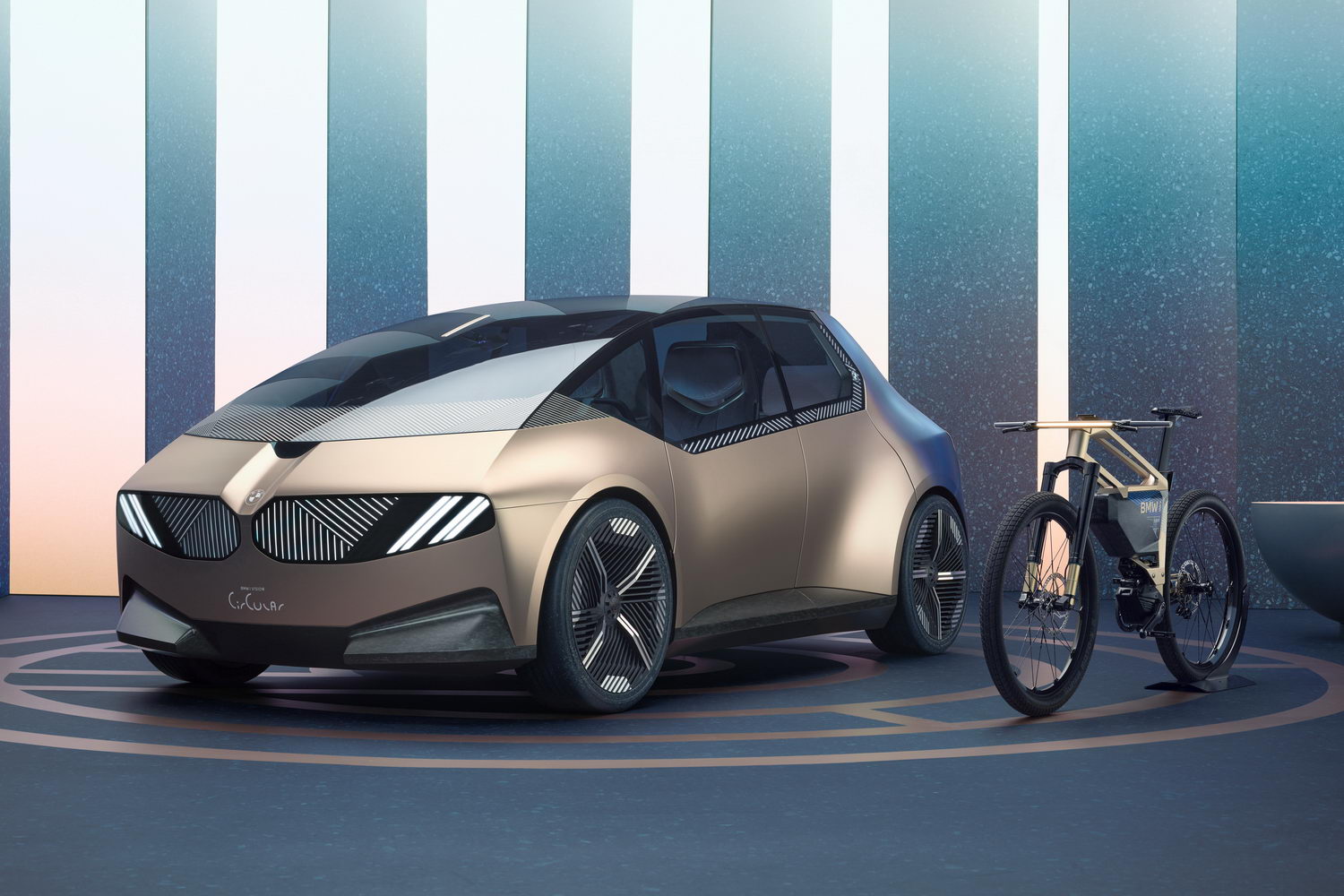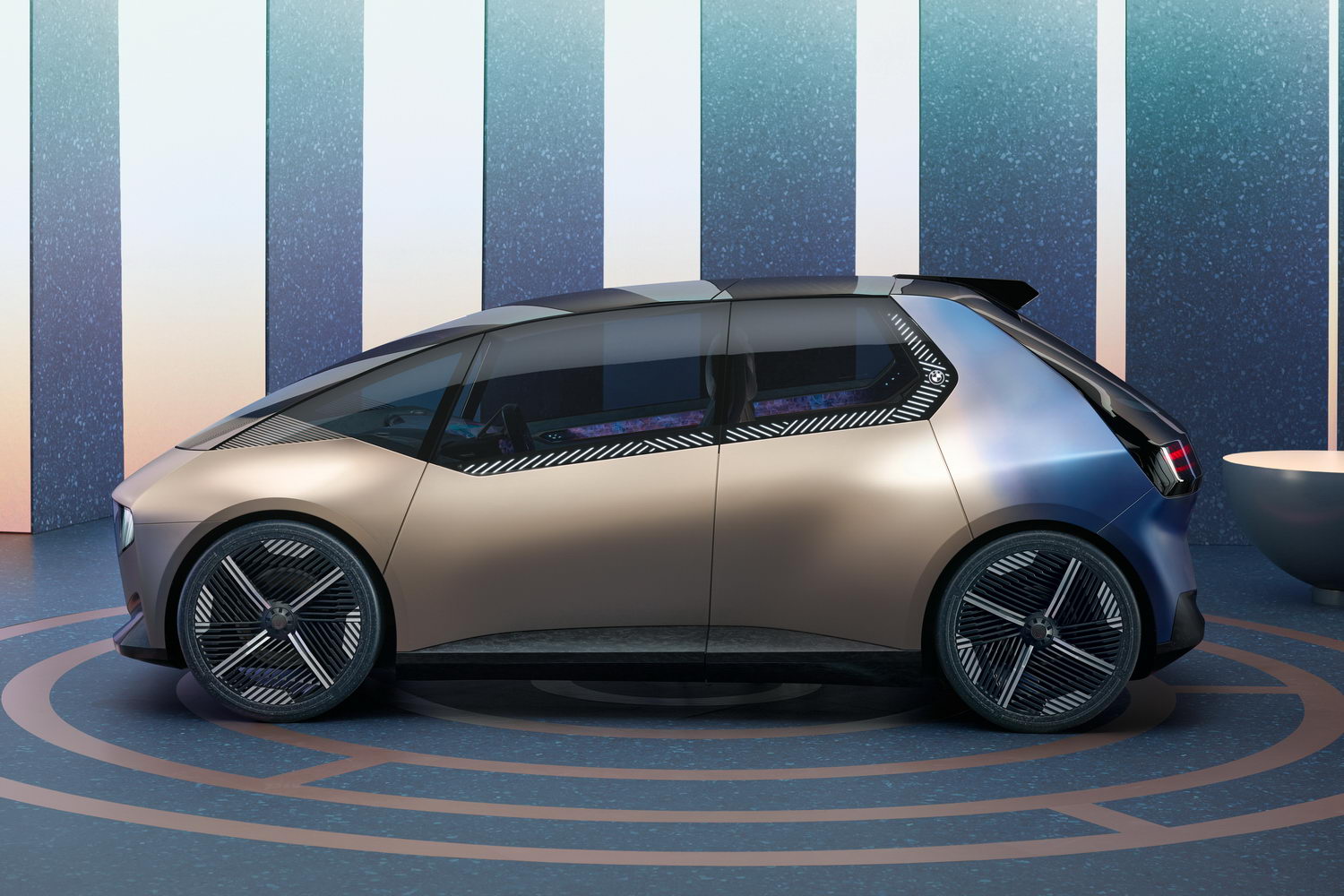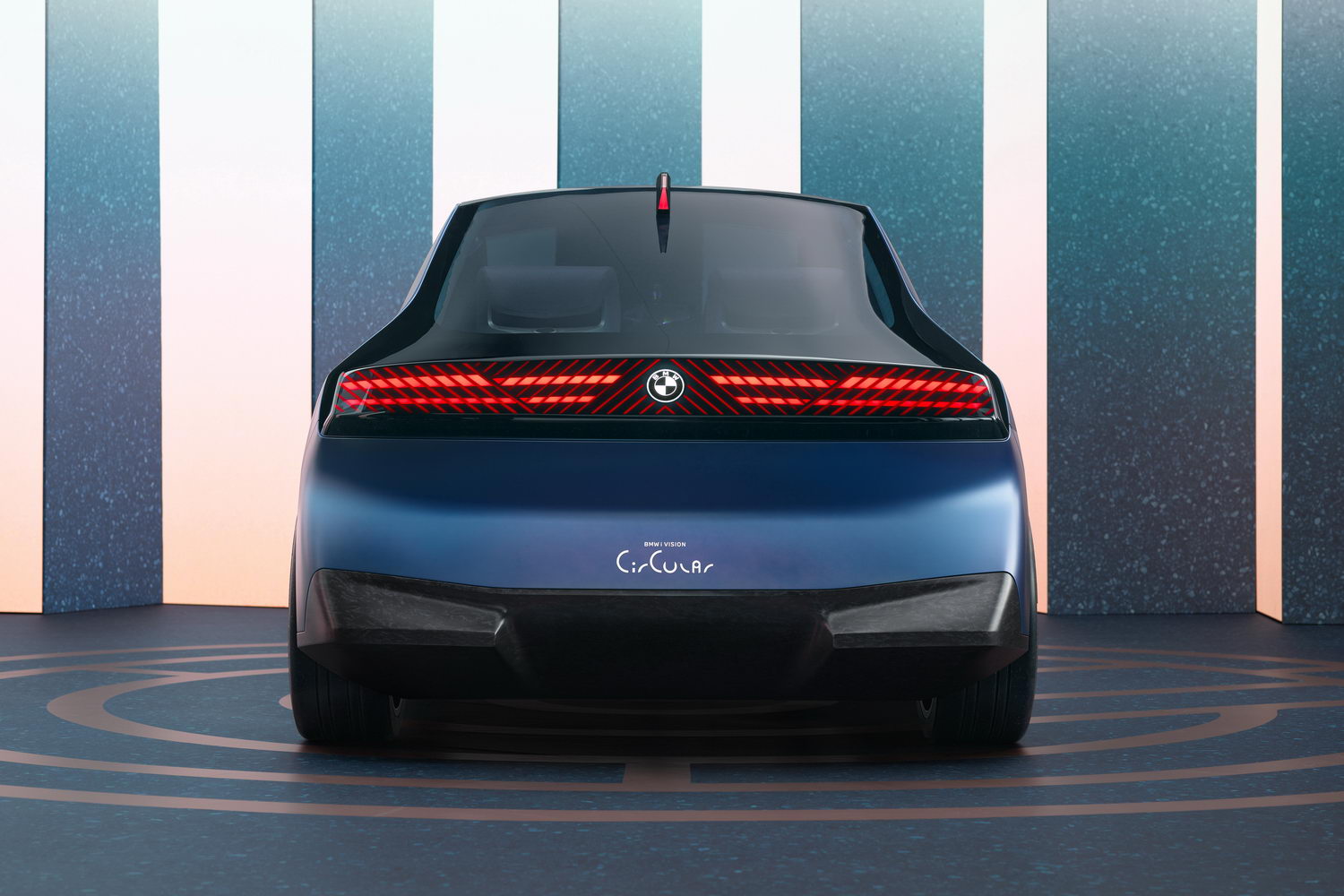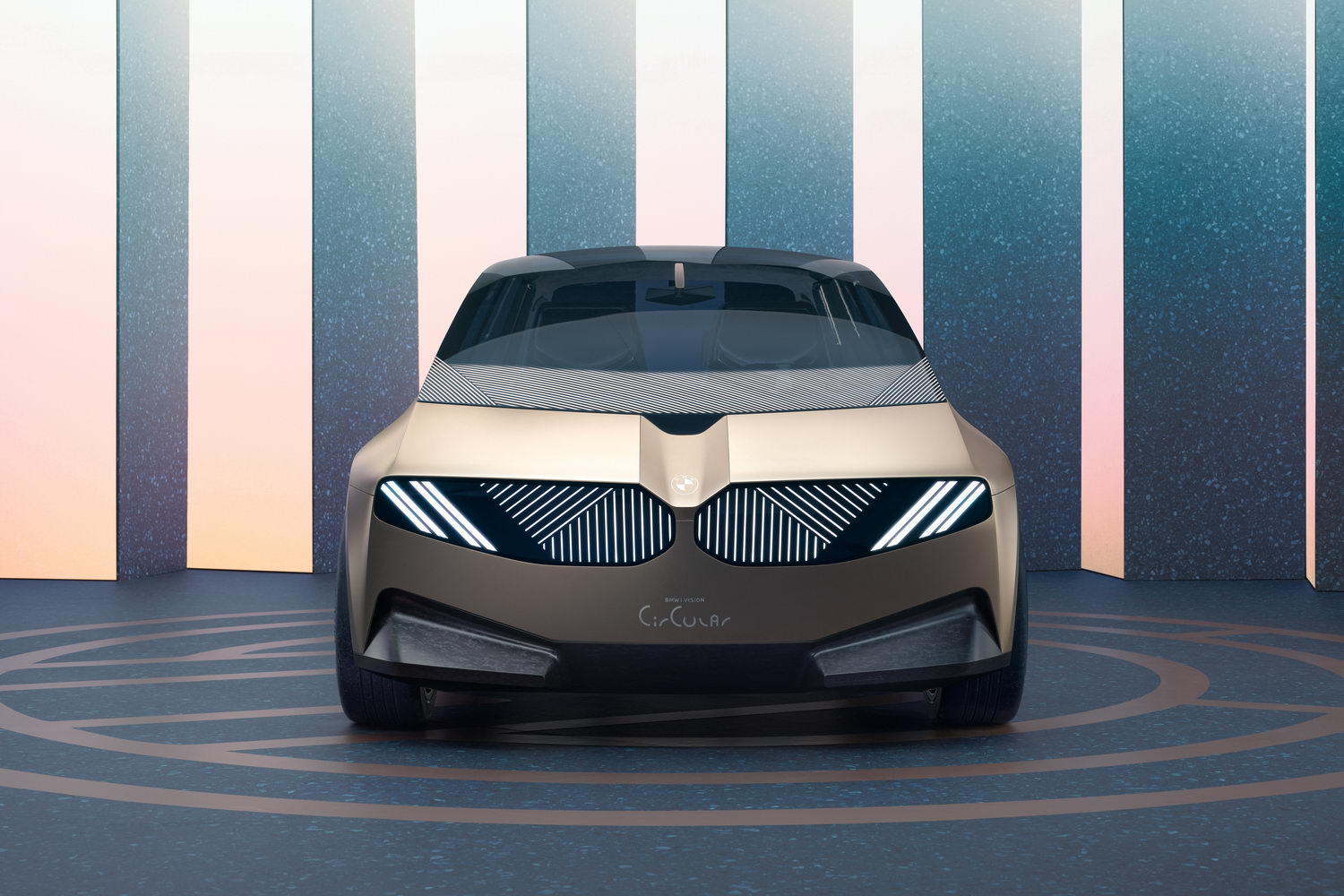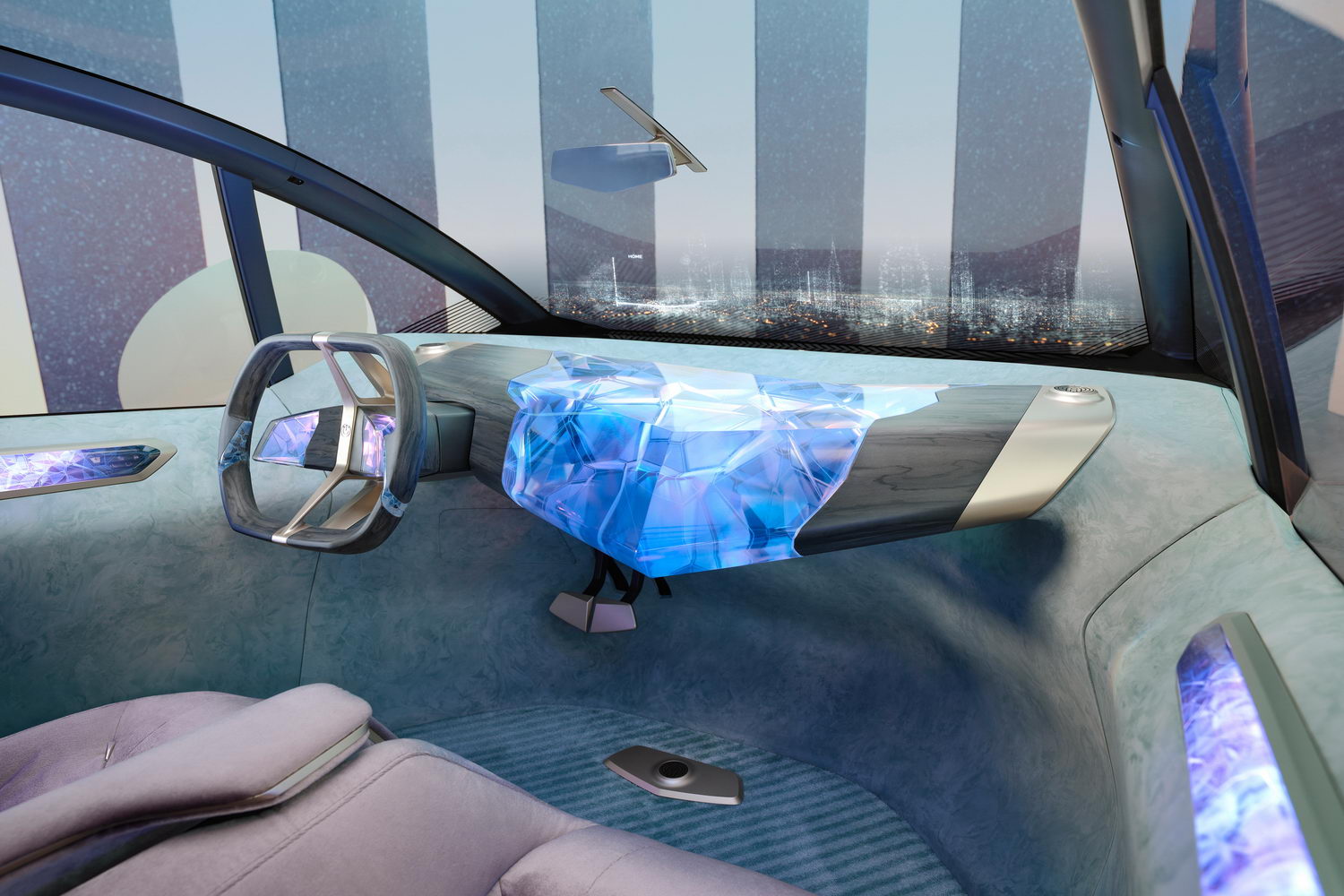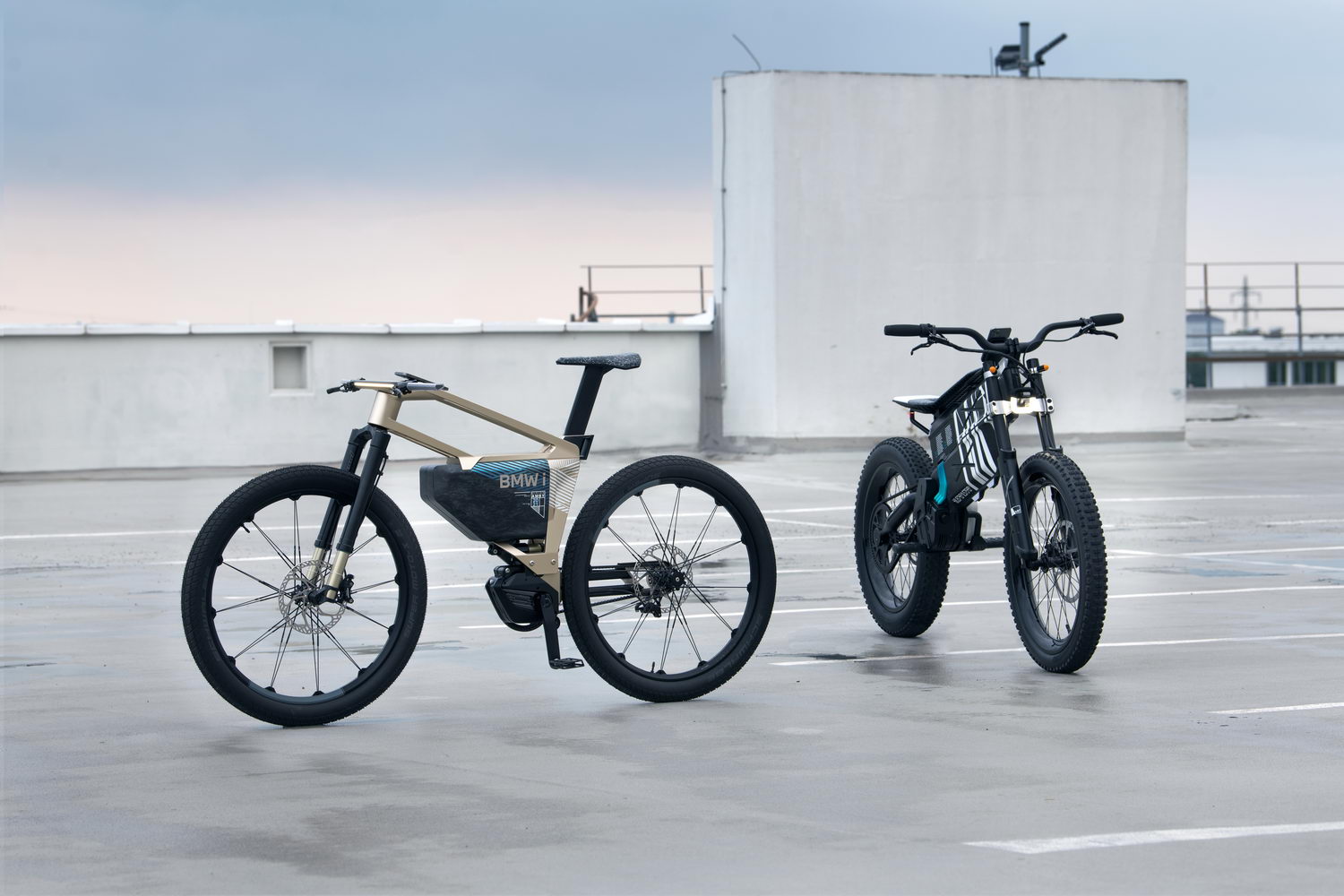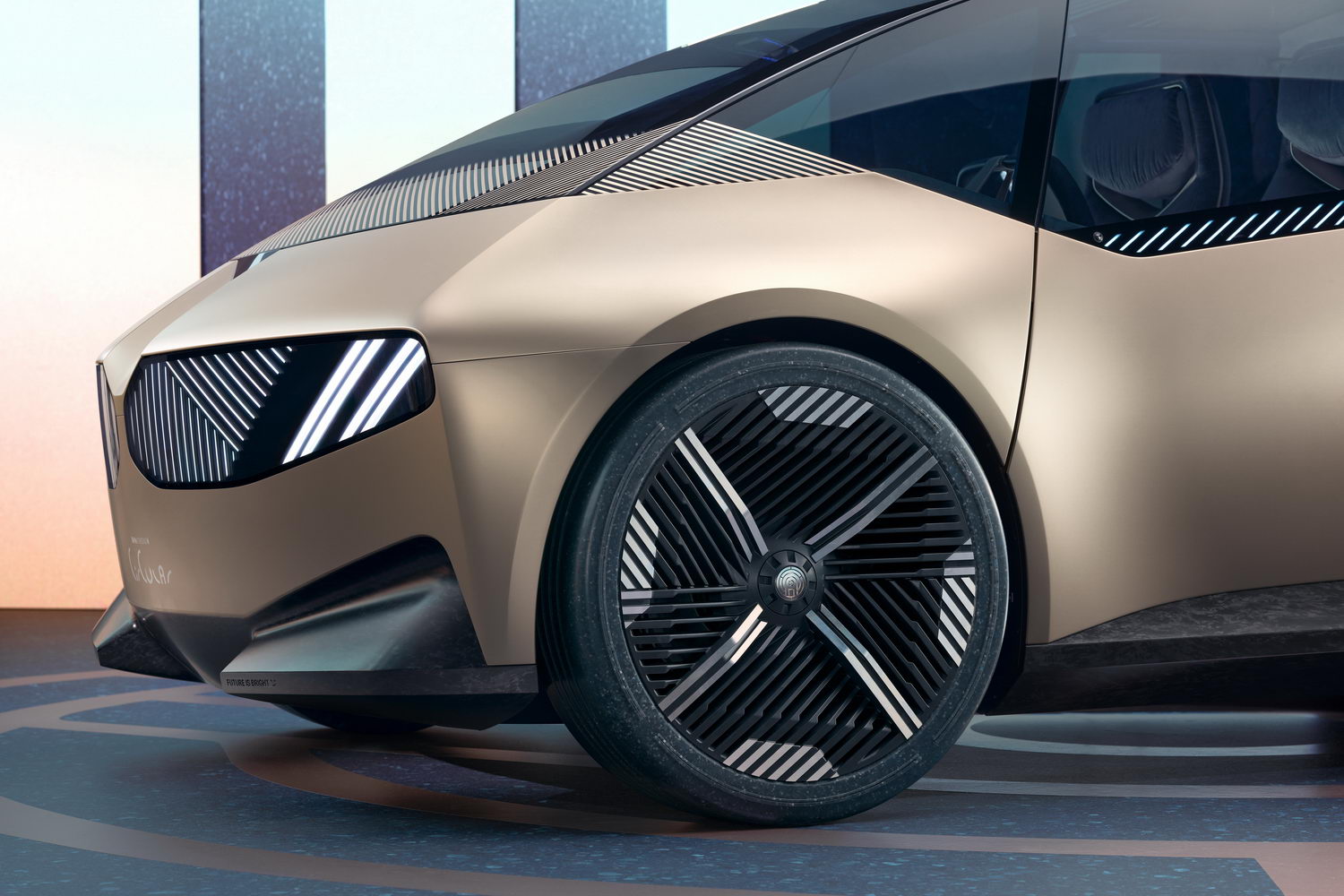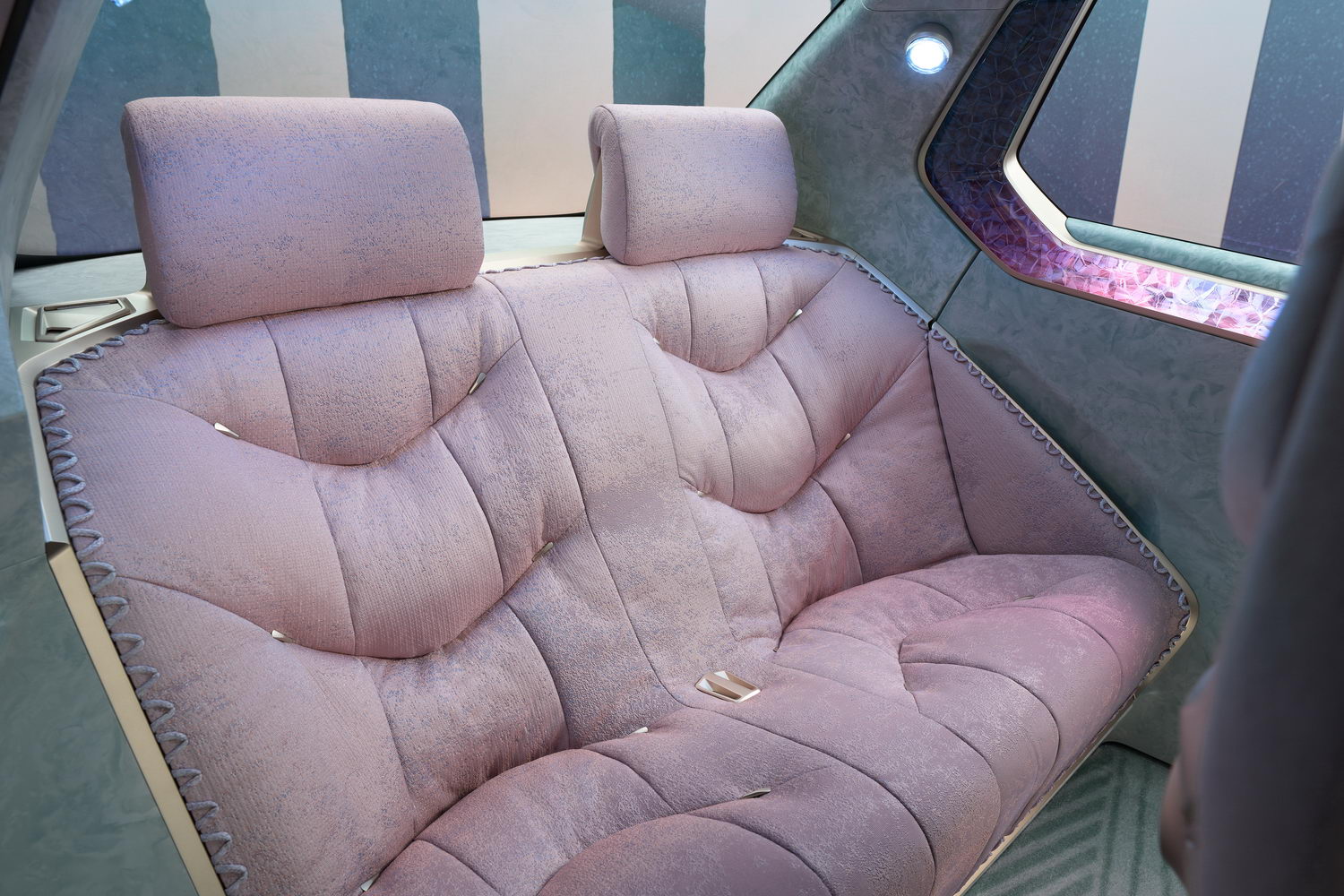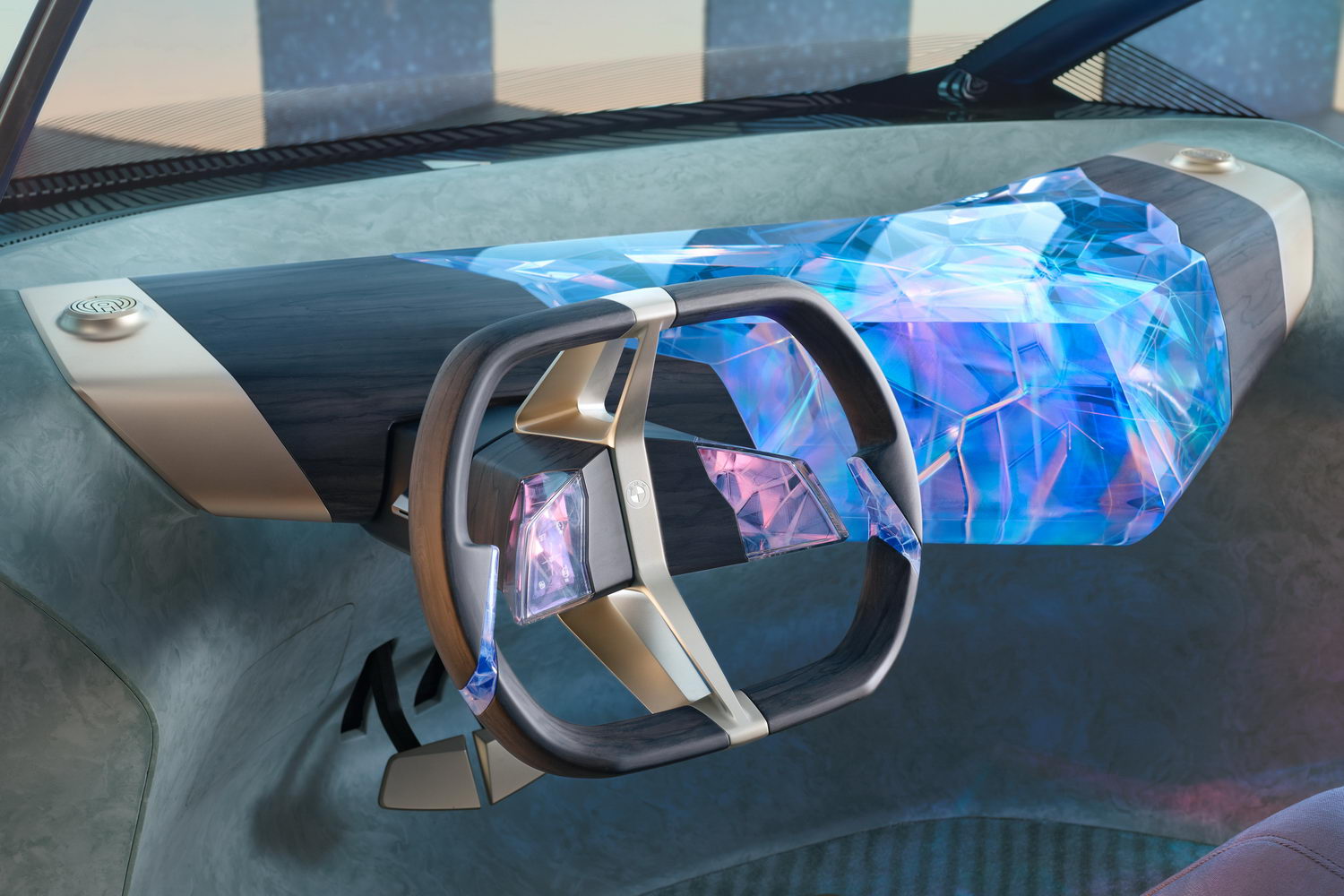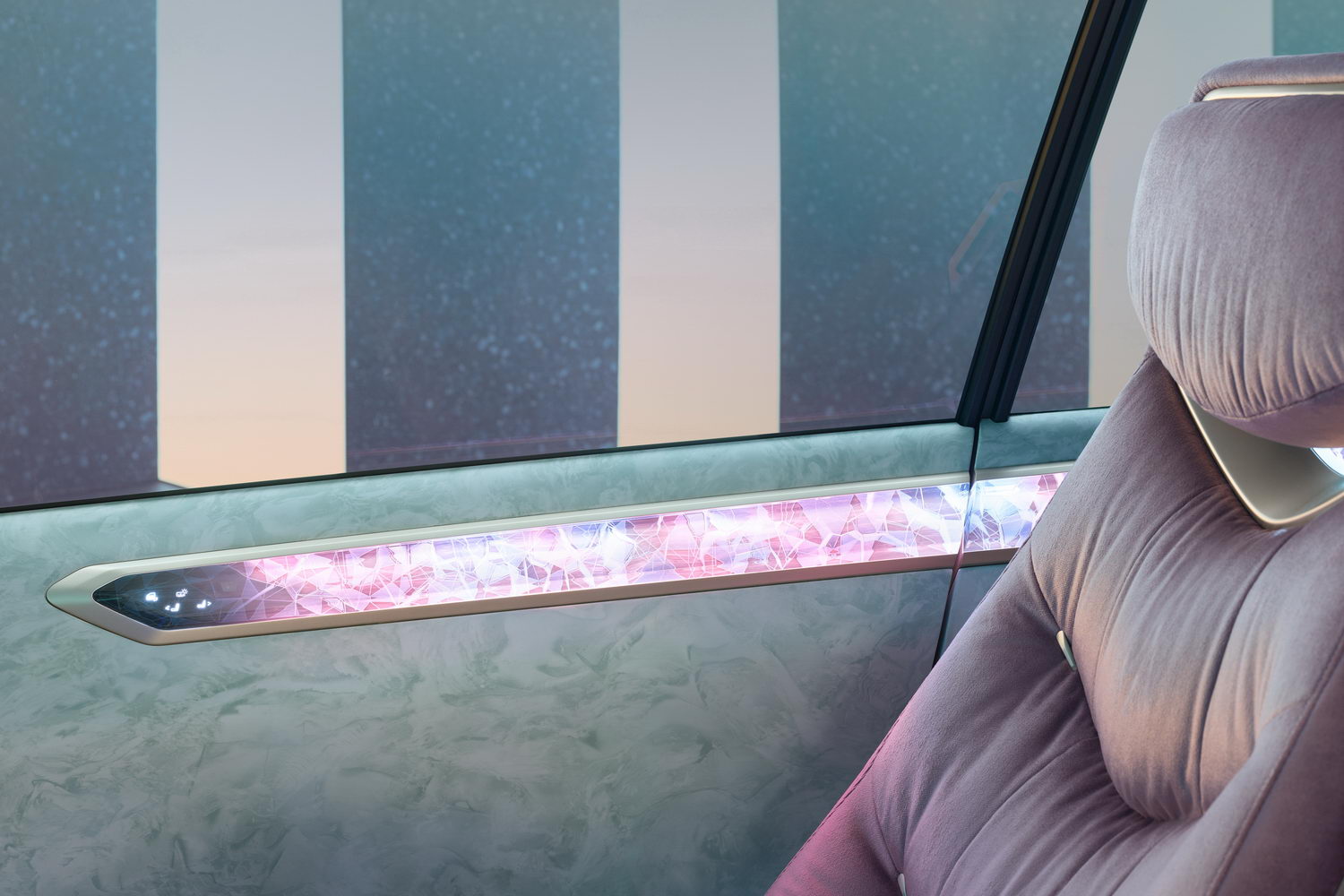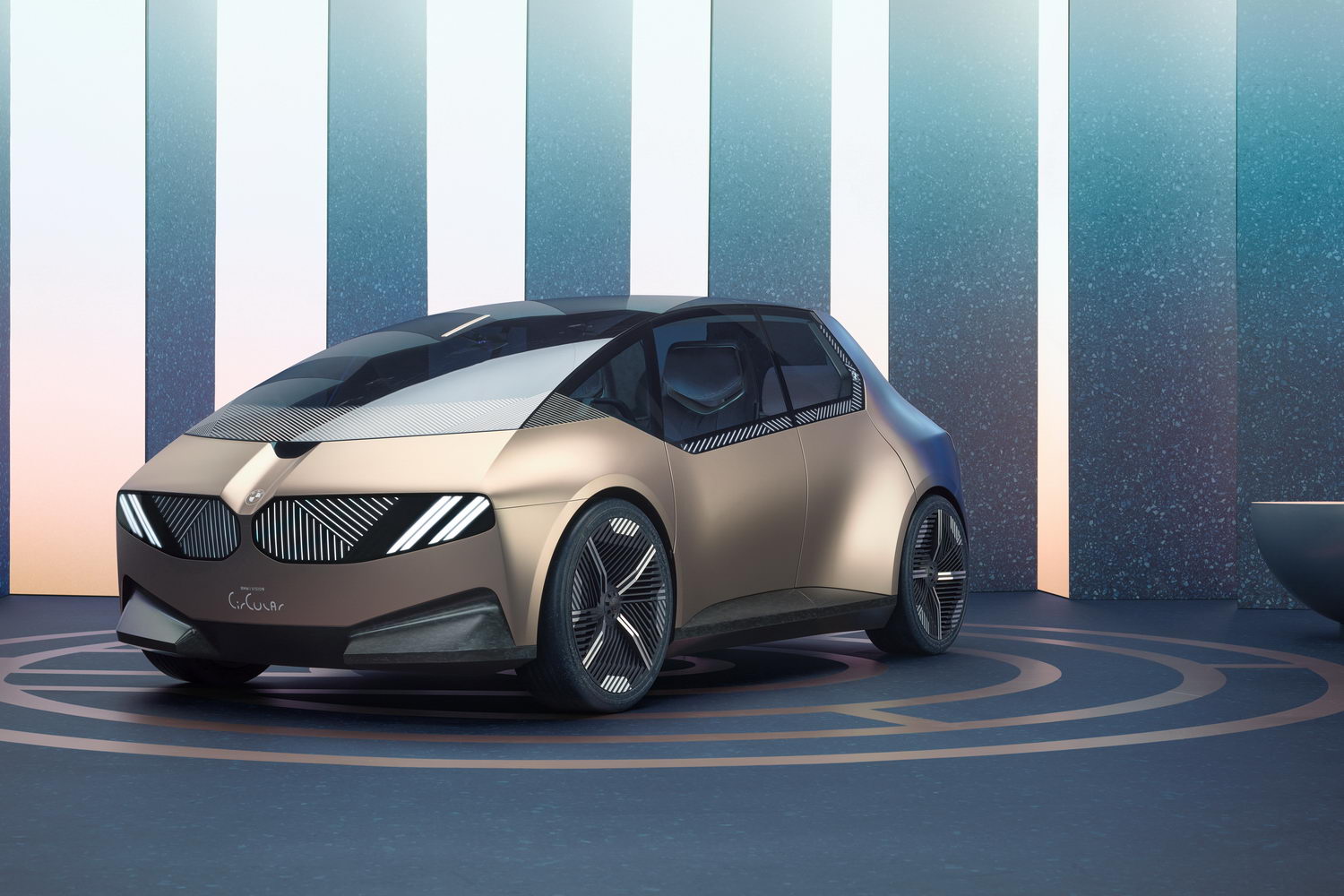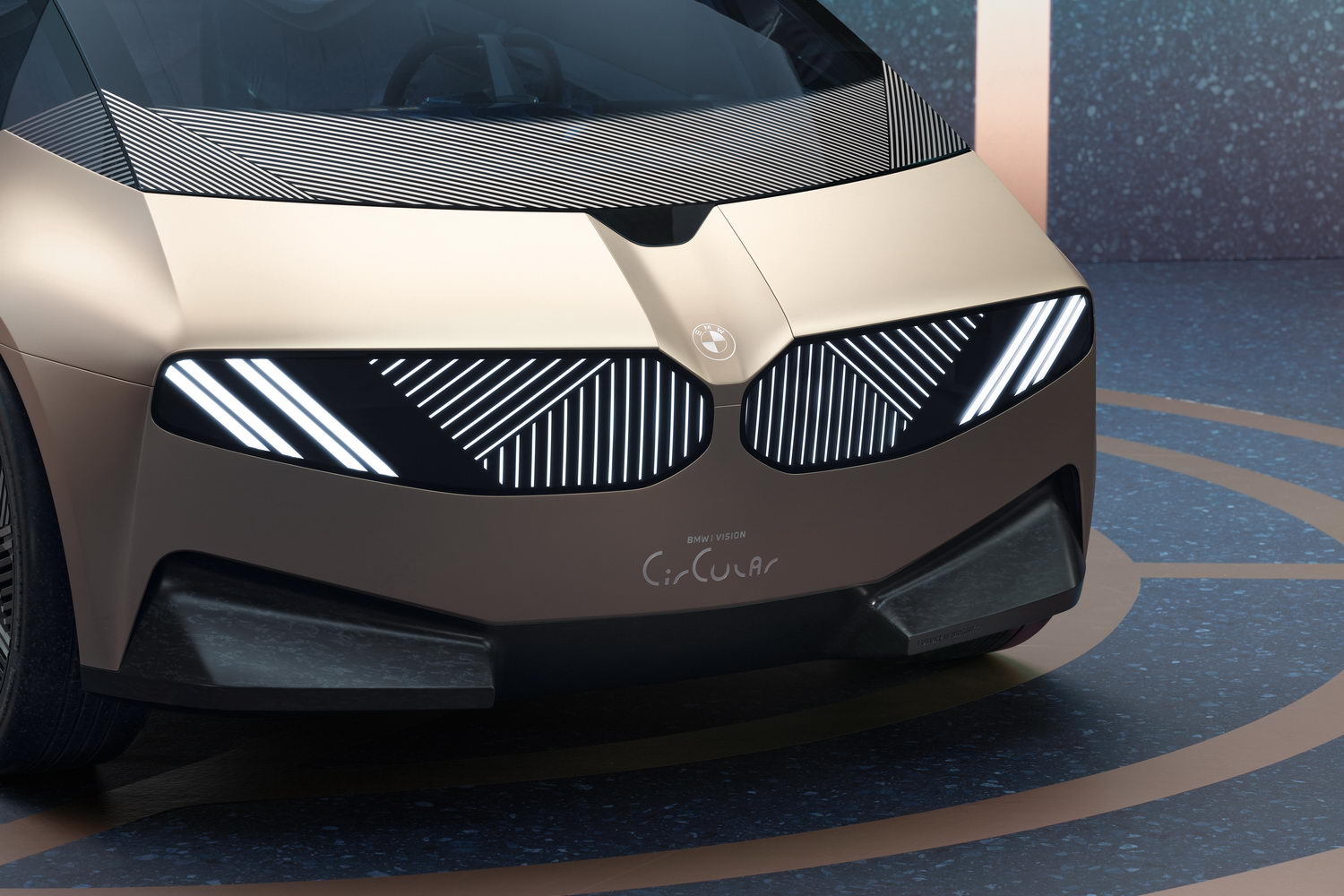BMW has revealed a new concept car, the i Vision Circular, intended to showcase its vision for the sustainable compact car of the future.
Circularity
The i Vision Circular's name comes from the theme of circularity and the circular economy, meaning that BMW sees the idea of constructing cars from recycled and waste material as a big part of its lower-carbon future.
BMW cars currently comprise around 30 per cent recycled and reused material, and the company intends to increase that to around 50 per cent in the coming years. The iVision Circular gives an idea of how it might achieve that.
Themes
BMW started with four themes: Rethink, Reduce, Reuse and Recycle.
Rethink involved examining how the company constructed its cars and looking at ways to improve it.
Reduce involved searching for ways to pare back the number of components and materials used in the construction of a vehicle. On the i Vision Circular, the designers eschewed chrome, leather and even exterior paint.
Reuse looked at figuring out ways to increase the longevity of the car, for example by digitalising the driving experience to allow for constant over-the-air updates and improvements, as well as making sure that replaceable components were easily detachable.
Recycle emphasised the use of recycled and waste materials in construction as well as making it easier to disassemble and recycle end-of-life cars. To aid in recycling, it was important to use the minimum number of different materials and, rather than using bonding, to use quick-release fasteners and connectors that could be easily separated.
Minimalist exterior
In profile the i Vision Circular is a mono-box design with an unbroken shape from front to rear.
Rather than a traditional BMW front-end, the designers incorporated the lights and grille shape into two graphic screens, allowing them to reduce the number of parts and materials. Even the badging is etched into the aluminium bodywork with lasers.
Instead of paint, the concept uses gold-anodised aluminium for the bodywork. This is significant given paint's large chemical footprint, which doesn't lend itself particularly well to ideas of sustainability.
The thin, slightly transparent tyres are made from natural rubber and with the addition of recycled rubber particles it's possible to alter the colour, which explains the purplish tint to those on the i Vision.
Rather than a chrome strip, a thin screen runs along the base of the side windows; it lights up to provide illumination when entering the vehicle in the dark.
The rear gets a similar treatment to the front with display screens rather than lights, reducing the number of components involved.
Bumpers front and rear are made from recycled plastic.
BMW interior 2040
The interior also highlights the recyclability theme being mostly made from single materials and avoiding the use of glue. Any surplus material, like offcuts from recycled plastic seat upholstery, will be fed back into the production system for further use.
Most of interior, like the four seats, are made from recycled plastics, while recycled wood is used as an accent in places like on the dashboard and steering wheel.
The huge glass canopy and relative lack of adornments or controls beyond the steering wheel and two pedals gives the cabin an airy and spacious feel.
There aren't any screens in the conventional sense. Instead, there's a 3D-printed crystal body instead of an instrument panel, which reacts to hand-movements. This features nerve-like animations, so it gives the impression of looking directly at the car's brain.
Information is, instead, projected onto the base of the windscreen via a head-up display.
Movement
Not only is the i Vision Circular's solid-state battery 100 per cent recyclable, but it's also made from materials sourced from the recycling loop, meaning a significant reduction in the number of resources consumed.
The design is also intended to incorporate vehicle-to-grid charging meaning that, if required, it can feed power from its battery back into the electric grid.
BMW sees much greater future use of "swarm intelligence," which involves the collection of data from users' cars in order to predict, for instance, traffic jams, enabling the car to calculate routes around any snags or obstacles, thereby increasing efficiency.
On your bike
In addition to the i Vision Circular, BMW has also unveiled an electric bike, the i Vision Amby.
The Amby, a portmanteau of "Adaptive Mobility", is, according to BMW, a "high speed pedelec" that can reach speeds of up to 60km/h on multi-lane and extra-urban roads. Using smartphone-based geofencing technology, the bike can recognise what type of road it's on or situation it's in and reduce or increase the maximum speed accordingly.
The user must constantly pedal to get the benefit from the Amby's electric drive and the bike should have a range of around 300km.
As there's currently no legal framework for bikes like this, BMW hopes that by presenting these ideas to the public, it can prompt lawmakers to begin creating legislation in this area.
Again, like the Vision Circular, the Amby presents BMW's vision for future sustainable urban mobility.

